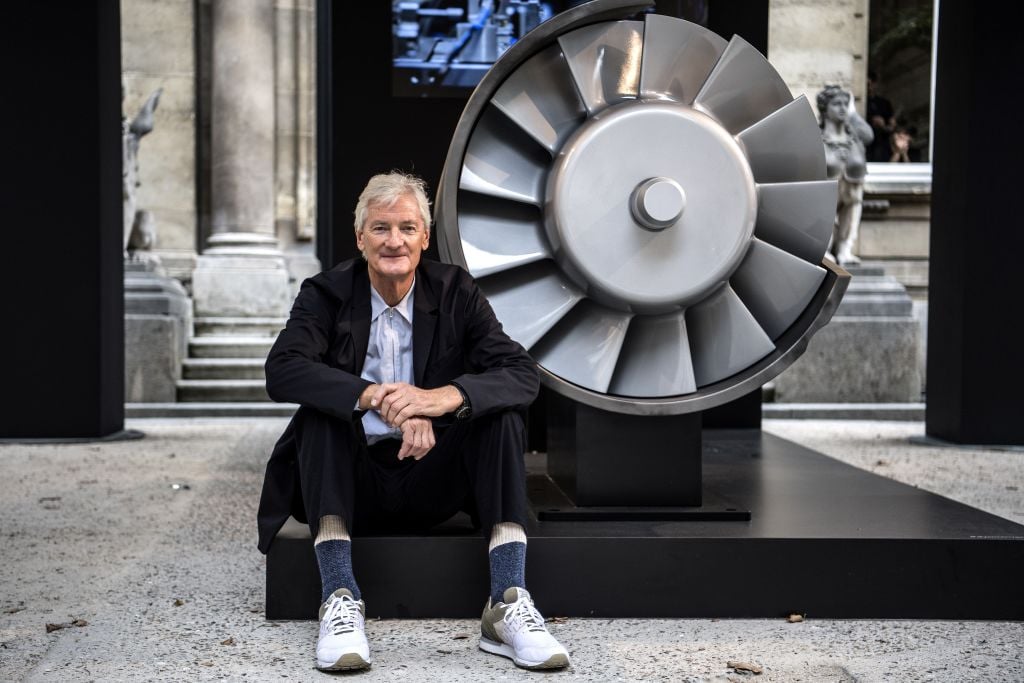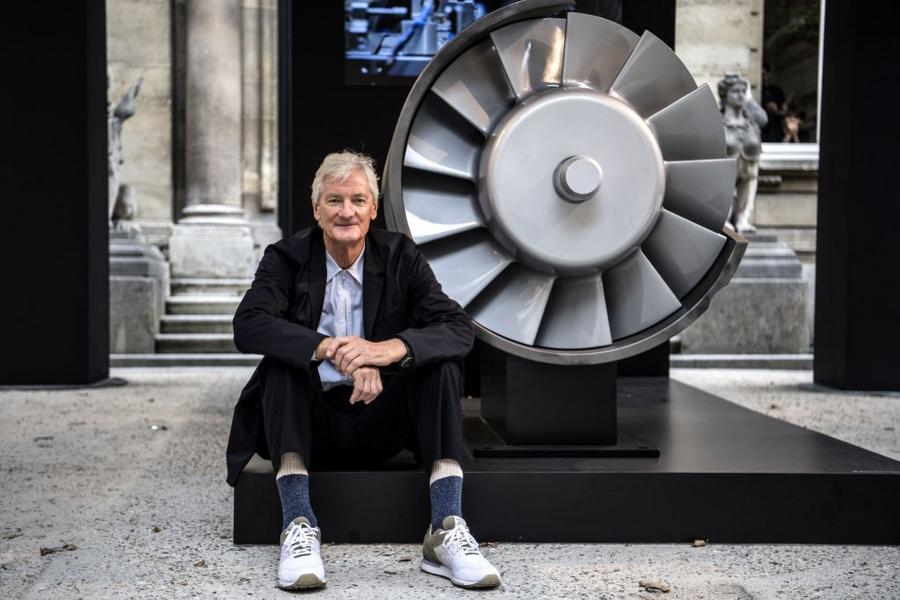I bought married just a few years again. And, as you understand, while you get married, you register for a bunch of presents. I am so sorry if anybody studying attended my marriage ceremony and bought me a present, however, frankly, I couldn’t have cared much less about all of the plates, pots, pans, bowls, wine glasses, and different kitchenware that we acquired. And that is an particularly horrible factor to say as a result of I REGISTERED FOR THEM.
Sarcastically, the ONE present I completely love was not on our registry in any respect. That present is a Dyson V7 Set off cordless hand vacuum. A pair who couldn’t attend our marriage ceremony despatched it to us with a word that stated one thing like, “I do know this wasn’t in your registry, however we’re obsessive about this vacuum.”
I’m now equally obsessive about this vacuum. I exploit it a number of instances a day, and it’s the most satisfying and hard-working equipment I’ve ever come throughout. To cite Ferris Bueller, “you probably have the means, I extremely suggest choosing one up”:
As a Dyson superfan, naturally, I used to be glued to my display when the corporate posted its newest product demo to the web final week. In sure circles, James Dyson’s launches are on the extent of a Steve Jobs keynote. His newest invention? The “Dyson PencilVac Fluffycones.” It’s best to watch the entire demo, it is solely round 8 minutes. However listed below are my prime highlights:
The world’s thinnest vacuum (38mm, 1.8kg) New particular cones that forestall hair from getting caught on the tread 360-degree illumination for individuals (like me) who get excessive satisfaction out of seeing the filth
However here is the factor that actually blows my thoughts each time I take into consideration James Dyson:
He owns 100% of his firm.
And it isn’t a small firm, Dyson generated greater than $8 billion in income final 12 months and $1.75 billion in revenue. James has by no means taken the corporate public, by no means introduced in non-public fairness, and by no means diluted his possession. In consequence, James Dyson has quietly amassed an $18 billion fortune. That is sufficient to make him the richest individual in England.
That is the story of how James Dyson turned 5,126 failures into one of many world’s most worthwhile tech empires and an $18 billion fortune…
(CHRISTOPHE ARCHAMBAULT/Getty Photos)
Humble Beginnings and a Curious Thoughts
James Dyson did not got down to grow to be one of many wealthiest inventors on the planet. He wasn’t born into cash, did not attend elite engineering academies, and did not have a crew of Silicon Valley VCs throwing money at his first thought. He was only a man who preferred fixing issues. As a younger man rising up in rural England, Dyson was all the time tinkering—first with artwork, then with design, ultimately discovering a fascination with the best way issues labored (and did not).
He studied on the Royal Faculty of Artwork, the place he initially targeted on furnishings and inside design. But it surely was a unique sort of venture that modified all the things: a wheelbarrow. Particularly, a high-performance, orange-colored wheelbarrow with a ball as a substitute of a wheel. It was known as the Ballbarrow. He got here up with it within the early Seventies, patented it, and even bought it on retailer cabinets. It did not make him wealthy, but it surely taught him an important lesson: innovation was attainable, even in probably the most boring home items. You simply had to have a look at the issue in a different way.
The Vacuum That Launched an Obsession
A couple of years later, Dyson had his eureka second—although “eureka” is likely to be too beneficiant. At some point, he was vacuuming his residence and seen his costly machine was dropping suction quick. He opened it up and found the bag was clogged with mud, reducing off airflow. Most individuals would change the bag and transfer on. Dyson went to his storage, grabbed some supplies, and began sketching out a greater system.
Impressed by industrial cyclones he had seen at a sawmill, he questioned: what for those who may use centrifugal pressure to separate mud from air, as a substitute of counting on a bag in any respect?
This kicked off a five-year obsession that might stretch his endurance, his marriage, and his checking account to the breaking level. Again and again, Dyson would construct a prototype, check it, tweak it, and take a look at once more. Most of them did not work. Some exploded. Some did nothing in any respect. He ultimately constructed 5,126 totally different variations of the bagless vacuum earlier than touchdown on the one which lastly labored.
That quantity—5,126—just isn’t a motivational exaggeration. It is the precise variety of failed prototypes he constructed by hand. No groups of engineers. No enterprise funding. Only a man, a storage, and a refusal to surrender.
At one level, he had mortgaged his home, sunk all his financial savings into elements and instruments, and nonetheless could not discover a producer prepared to take a threat on his invention. Vacuum corporations wished nothing to do with a product that did not require ongoing purchases of disposable baggage. Retailers did not consider clients would perceive the expertise. For some time, it appeared like the best vacuum on this planet would possibly by no means make it to market.
However Dyson had one final thought: if no person else would promote it, he would.
Breaking By way of in Japan
When each main vacuum producer in the UK rejected his invention, James Dyson appeared overseas. Within the early Nineties, he struck a licensing take care of a Japanese firm known as Apex. It wasn’t glamorous. The product was branded the “G-Power” and offered largely via infomercials. However the Japanese market responded with shocking enthusiasm. The G-Power was smooth, highly effective, and in contrast to the rest in the marketplace. It offered for the equal of $2,000 and even received a design award in Japan.
That surprising success gave Dyson the boldness and the monetary footing to take issues into his personal arms. In 1993, he opened Dyson Ltd. within the UK and launched his first mannequin, the DC01. It shortly turned the best-selling vacuum cleaner in Britain. Prospects liked the clear bin that confirmed precisely how a lot filth was being sucked up, they usually have been thrilled to by no means purchase vacuum baggage once more. It felt futuristic, sensible, and simply rebellious sufficient.
The Reluctant Empire Builder
Dyson’s machines weren’t low cost, however they labored higher than the rest. Phrase unfold. Gross sales grew. Opponents tried to repeat the cyclonic expertise, however Dyson aggressively defended his patents. With each new mannequin, the corporate doubled down on design, engineering, and efficiency. No gimmicks. No shortcuts.
As a substitute of chasing developments, Dyson constructed an in-house engineering tradition targeted fully on fixing actual issues. Whether or not it was hair getting tangled in vacuum rollers or lighting up mud in darkish corners, Dyson engineers attacked it with obsessive consideration to element. That mindset prolonged to bladeless followers, air purifiers, hand dryers, hair dryers, and extra.
By 2002, Dyson had captured greater than 50% of the UK vacuum cleaner market. By 2005, it was dominating in america. At the moment, the corporate sells in additional than 80 nations and brings in over $8 billion in annual income.
By way of all of it, James Dyson saved full management. He did not take outdoors funding. He did not go public. He refused to compromise the corporate’s independence, even when it may need been simpler to money out or delegate energy.
The Billionaire Engineer Who Refused to Cease Innovating
Most entrepreneurs who construct an $8 billion-a-year firm would possibly take a breath. Not James Dyson. As a substitute of coasting, he poured extra money into analysis and growth. Much more. Since 2021 alone, Dyson has invested greater than $2.5 billion into R&D, which works out to over $9 million per week. That funding helps a world military of engineers and scientists engaged on tasks that go far past vacuum cleaners.
The corporate’s R&D footprint now spans america, the UK, Singapore, the Philippines, and Malaysia, with a 750-acre expertise campus outdoors of Malmesbury, England, that appears extra like a cutting-edge college than a company headquarters. Dyson’s groups are continually experimenting with robotics, batteries, machine studying, and even biomedical sensing.
In 2019, Dyson made a controversial however calculated transfer. He shifted the corporate’s company headquarters from the UK to Singapore. The choice sparked political backlash, particularly given his public assist for Brexit. However the reasoning was strategic. Singapore is nearer to Dyson’s core manufacturing hubs and high-growth markets in Asia. It additionally supplied a centralized base for the corporate’s formidable push into electrical automobiles and battery expertise, which have been in growth on the time.
A Legacy of Management
At the moment, James Dyson stays the only proprietor of Dyson Ltd. That truth alone units him other than virtually each different founding father of a world tech firm. He has by no means offered a single share of his enterprise. By no means diluted his stake. By no means answered to enterprise capitalists or hedge funds.
What’s much more exceptional is that Dyson’s success has by no means been fueled by hype. No superstar endorsements. No influencer advertising and marketing. No flashy Tremendous Bowl adverts. Simply engineering, precision, and merchandise that clients truly love.
Having vacuumed up an $18 billion fortune, it actually would not suck to be James Dyson.


